Excerpts from Jim Conrad's
Naturalist Newsletter
Entry dated November 7, 2023, from notes taken near Cascadas de La Piedad waterfall 3kms NW of the community of San Pablo, municipality of Almeaco de Bonfil; bedrock of thick layers of compacted volcanic ash, or tuff; N20.1024°, W100.0019°, elevation 2360 meters (7750ft); extreme southern Querétaro state, MÉXICO
BRISTLEHEAD
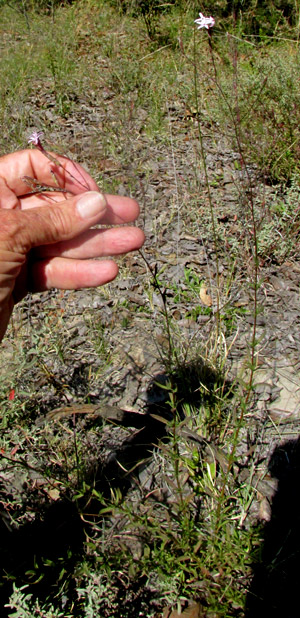 In a grassy open spot on a slope mostly forested with oaks, at first it seemed that the wildflower at the right consisted of only two stems each topped by a single white flower but, closer up, a more complex arrangement was seen:
In a grassy open spot on a slope mostly forested with oaks, at first it seemed that the wildflower at the right consisted of only two stems each topped by a single white flower but, closer up, a more complex arrangement was seen:
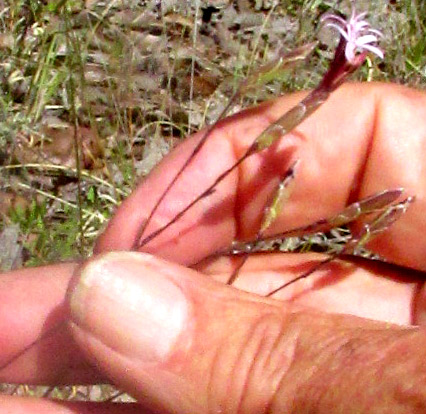
The flowering part consisted of several small heads, each arising at the tips of stiff, slender, branching, pedicel-like stems. Most heads, or capitula, were too young to produce florets with open corollas. Each capitulum comprised three or so disc florets gathered within bowl-like involucres, with each involucre composed of several scale-like bracts, or phyllaries. This unique arrangement identified the largest of all plant families, the Composite/Aster/Sunflower Family, the Asteraceae.
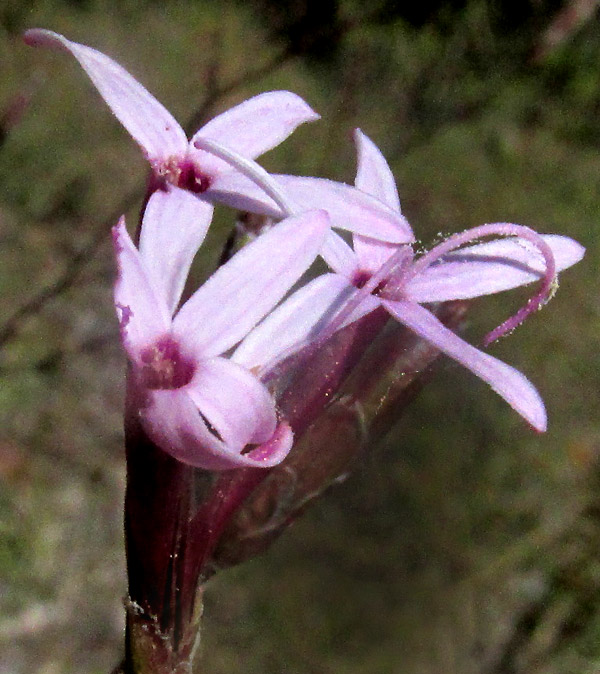
Exceptionally long style branches issued from corollas with unusually long, abruptly flaring lobes.

The above capitulum holds three disc florets accompanied by several stiff, slender bristles. The unusually narrow involucre consists of several hairy bracts, or phyllaries, arranged in three or four overlapping series. The florets' corollas and the conspicuous bristles, along with the plant's general form and the corolla color, are strongly suggestive of the genus Stevia, such as Stevia pilosa.`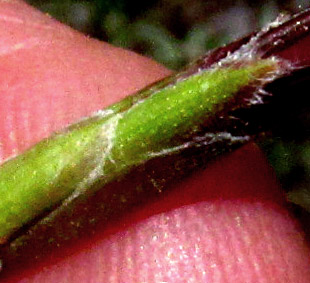 However, phyllaries on Stevia species number five, are all the same height, and are arranged side by side, not in overlapping series like those shown at the right. In that picture, notice that the phyllaries bear tiny bumps, which are glands, plus they're sparsely hairy, and at their sides they form a narrow fringe of thin, somewhat transparent, or hyaline, tissue, better shown below.
However, phyllaries on Stevia species number five, are all the same height, and are arranged side by side, not in overlapping series like those shown at the right. In that picture, notice that the phyllaries bear tiny bumps, which are glands, plus they're sparsely hairy, and at their sides they form a narrow fringe of thin, somewhat transparent, or hyaline, tissue, better shown below.
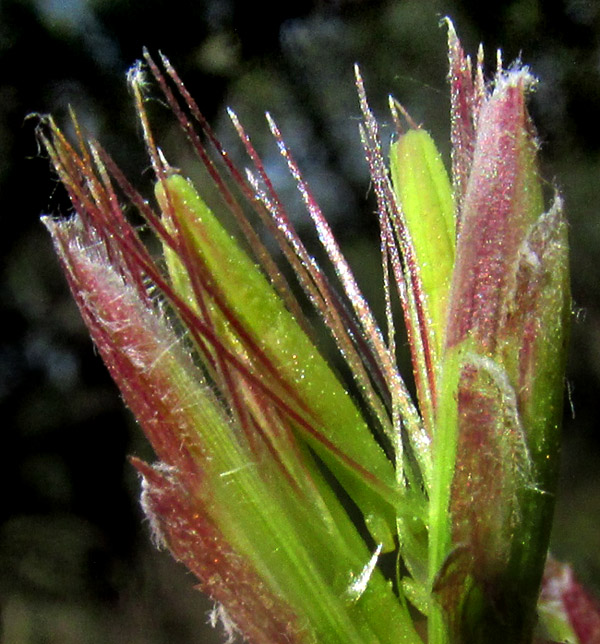
The phyllaries also bore pointed tips. The above photo also indicates that no scale-like paleae occur between the florets' maturing green ovaries, the future fruits.
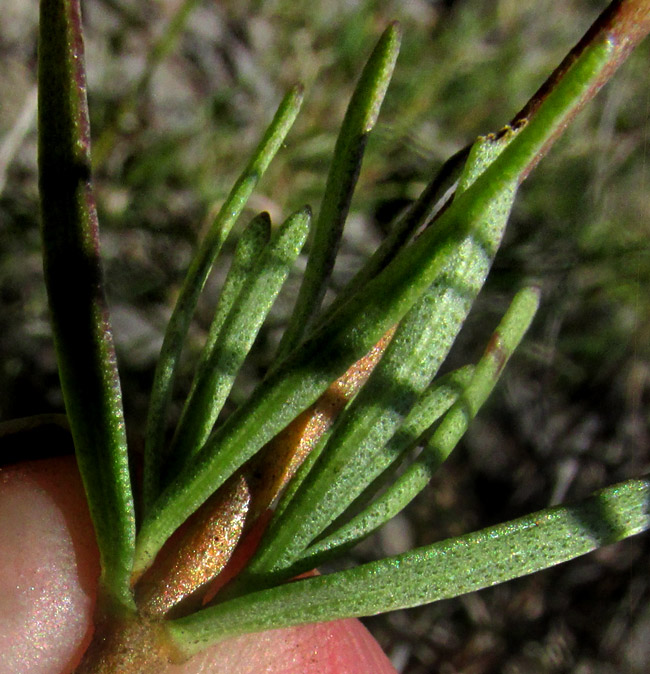
Pairs of leaves arose opposite one another, with tufts of smaller leaves arising in their axils. The blades were were heavily gland-dotted.
In our part of upland central Mexico, if you have an Aster Family species whose capitula bear no ray florets, only stiff bristles but no scales arise atop the florets' ovaries, no paleae separate floret ovaries from one another, leaves are conspicuously glandular but the glands are dark and not of the translucent kind, plus overlapping phyllaries are arranged in more than one series, you have the genus Carphochaete, species of which are known as bristleheads. In our general area, only one Carphochaete species has been documented, and that's Carphochaete bigelovii. However, when I named it that, "oscargsol" on iNaturalist, an expert in Mexican Aster Family species, said it was CARPHOCHAETE GRAHAMII, so I'm going with that.
Carphochaete grahamii is less widely distributed than C. bigelovii, being endemic to upland central Mexico and a bit farther northwest in the Western Sierra Madres.
I find no traditional use for this bristlehead species, though that may be because it's not well known to researchers, maybe partly because in general it looks like so many other small, obscure members of the vast Aster Family. Certainly pollinators use it one way or another, and foraging herbivores. And then there's the oxygen it produces for us all, its roots holding soil in place on a slope afflicted with conspicuous erosional gullies, and when the plant dies it'll contribute itself to the soil organic matter, without which soil is not much use to living things.